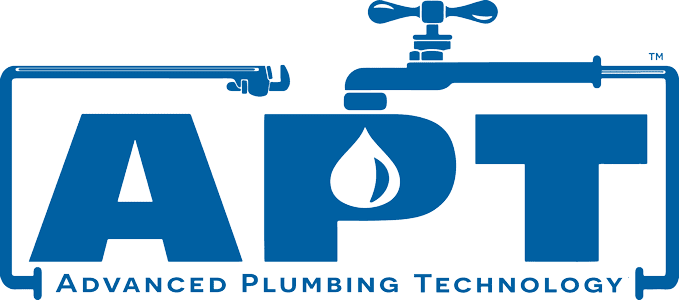The ABCs of Plumbing: A Beginner’s Guide to Your Home’s Systems
September 26th, 2023Posted by Brian Shoemaker
Intro: Plumbing Unveiled
When it comes to homeownership, understanding the basics of plumbing can save you from countless headaches and unexpected expenses. Your home’s plumbing system plays a crucial role in your daily life, from providing clean water for drinking and bathing to safely removing waste from your property. Whether you’re a new homeowner or just looking to expand your knowledge, this beginner’s guide to plumbing will equip you with essential information to navigate your home’s plumbing systems with confidence.
An Insight into Your Home’s Plumbing System
The Water Supply Network
Your home’s plumbing system is essentially divided into two main parts: the water supply network and the drainage system. The water supply network brings clean and potable water into your home, ensuring that you have a ready supply of water for various purposes. This network consists of pipes that connect to your local water source, such as a municipal water supply or a well.
- Main Water Line: The main water line is the initial entry point for water into your home. It’s responsible for delivering water from the source to your property. This water is then distributed throughout your home through a network of pipes.
- Shut-off Valves: Knowing the location of shut-off valves is crucial. These valves allow you to stop the water flow to specific areas or fixtures in case of emergencies or repairs. There are individual shut-off valves for sinks, toilets, and other fixtures, as well as a main shut-off valve that controls the water supply to the entire house.
- Water Meter: The water meter measures your water usage. Monitoring it periodically can help you keep track of your water consumption and detect any sudden increases that might indicate leaks.
The Drainage System
The drainage system is responsible for removing wastewater and sewage from your home, ensuring a hygienic living environment. This system is designed to carry used water away to a sewer or septic system.
- Drain Pipes: These pipes collect wastewater from various fixtures in your home, such as sinks, showers, toilets, and appliances. Gravity helps move the waste through the drain pipes and into the main sewer line or septic tank.
- Vent Pipes: Vent pipes play a crucial role in the drainage system by allowing air to enter the plumbing system. This prevents airlocks and ensures that wastewater can flow freely without creating a vacuum that might slow down drainage.
- Sewer Line: The sewer line connects the drain pipes in your home to the municipal sewer system or your septic tank. Proper maintenance of this line is essential to prevent clogs and backups.
Common Plumbing Issues and How to Address Them
Leaky Faucets and Pipes
One of the most common plumbing issues you might encounter is a leaky faucet or pipe. The constant dripping not only wastes water but also increases your water bill over time.
Solution: For leaky faucets, replacing the worn-out washers or cartridges inside the faucet assembly often solves the problem. When dealing with leaky pipes, turning off the water supply and applying a patch or using a plumbing tape can temporarily stop the leak until a professional can assess and repair it.
Clogged Drains
Clogged drains can lead to slow drainage, unpleasant odors, and even backups. They are usually caused by the accumulation of hair, soap scum, food particles, or grease in the pipes.
Solution: Prevent clogs by using drain covers to catch debris before it goes down the drain. For minor clogs, use a plunger or a drain snake to clear the blockage. Avoid using chemical drain cleaners, as they can damage your pipes over time.
Running Toilets
A running toilet can waste a significant amount of water and inflate your water bill. It’s often caused by a malfunctioning flapper valve or a faulty fill valve.
Solution: Lift the toilet tank lid and inspect the flapper valve and the chain connected to it. Adjust or replace these components if needed. If the problem persists, it might be best to consult a plumber.
Preventive Maintenance for a Healthy Plumbing System
- Regular Inspections: Perform routine checks on your plumbing system to identify any leaks, drips, or signs of corrosion. Detecting issues early can save you from more extensive and expensive repairs down the line.
- Proper Disposal: Be mindful of what you flush down the toilet or wash down the drain. Avoid disposing of items like feminine hygiene products, paper towels, or grease, as they can cause clogs and damage your plumbing.
- Water Pressure Regulation: High water pressure can strain your pipes and fixtures, leading to leaks or bursts. Consider installing a pressure regulator to maintain a safe and consistent water pressure throughout your home.
- Winter Preparations: In colder climates, prevent frozen pipes by insulating exposed pipes and disconnecting outdoor hoses before winter. Running a trickle of water through faucets during freezing temperatures can also help prevent pipes from freezing.
In Conclusion
Understanding the basics of your home’s plumbing system empowers you to take better care of your property and tackle minor issues before they escalate into major problems. By familiarizing yourself with the water supply network, drainage system, common plumbing issues, and preventive maintenance measures, you’ll be well-equipped to ensure the smooth functioning of your home’s plumbing for years to come. Remember, while some DIY fixes are possible, it’s always a good idea to consult a professional plumber for complex issues or when in doubt. Happy plumbing!
